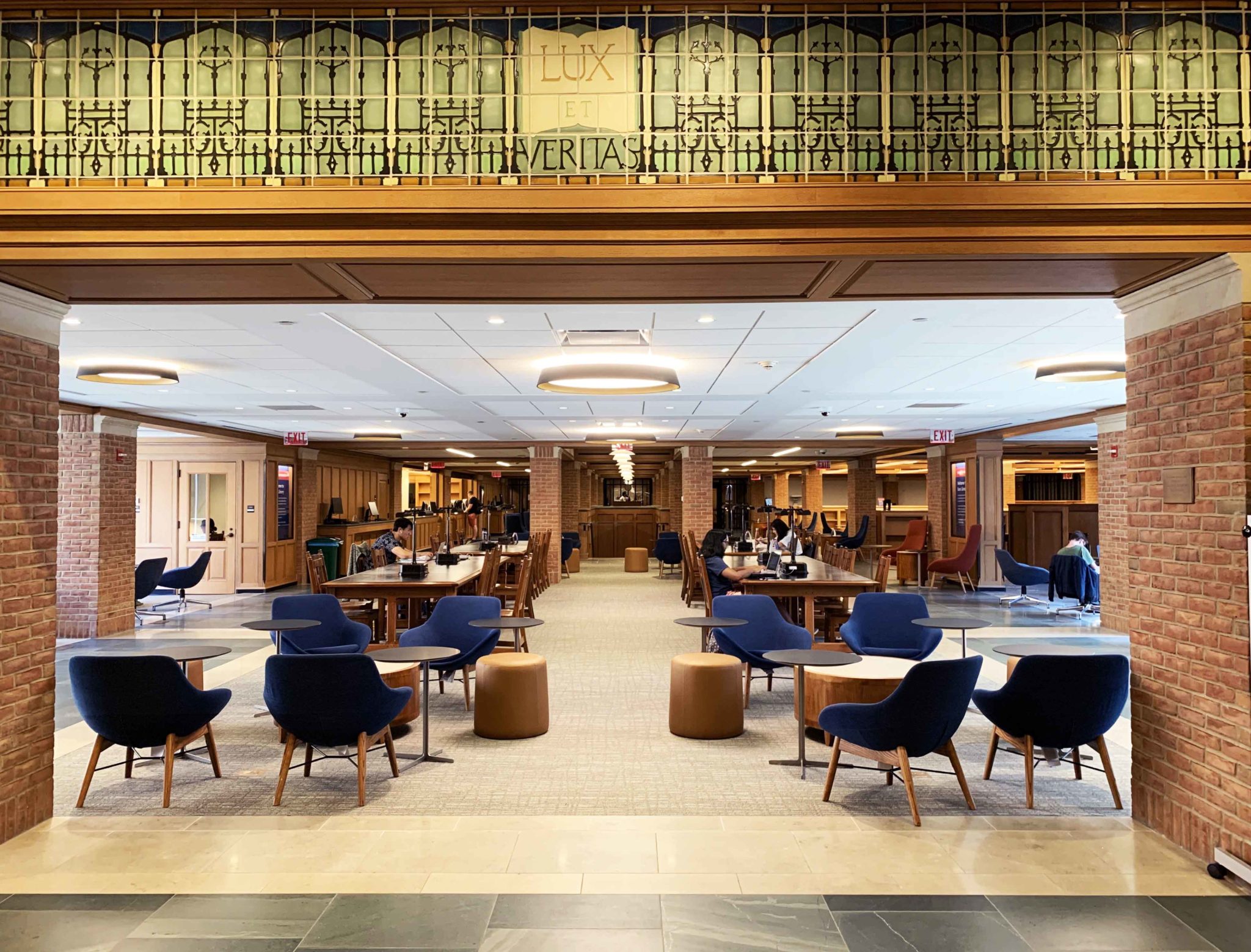
Courtesy of Emily Tian
Complete with free tote bags and refreshments, Bass Library officially reopened on Tuesday and unveiled the first Model Research Collection — which includes shelves filled with books and topped with corresponding art.
According to Vice Provost for Collections and Scholarly Communications and University Librarian Susan Gibbons, the renovation was intended to address three criteria, established following the results of a student survey. Gibbons said the updates increased natural light, installed carrels to supply private places for focused study and added seating — a change made necessary after the opening of two new residential colleges and the gradual increase in the size of the student body over the last three years.
The Model Research Collection — curated by Laura Wexler, a professor of American Studies and Women’s, Gender and Sexuality Studies —reflects broader renovation efforts in Bass Library to increase student engagement in the space. The collection is intended to reflect a scholar’s methods and how they interact with their material and also aims to stimulate conversation around the research process.
“What we heard a lot as we did our study [on how to improve Bass] was, opportunities to engage with text and rather than just books on the shelf, how can we make them more alive,” Gibbons said.
In Gibbons’ address to the assembled crowd of students and faculty, she defined Bass as a “gateway” to other libraries, aiming to encourage exploration beyond Bass’s resources. Bass contains over 60,000 volumes — including collections of books and articles — and is intended to support curricula across academic disciplines.
Wexler named the exhibit “Find a Set, Find a Text,” which is also the title of the final assignments she gives in her classes. She describes her work as “profoundly interdisciplinary,” which is reflected in the exhibit. Black frames, some filled with the photographs Wexler has studied, line the tops of the chest-high bookshelves. Other frames contain black netting, which she said symbolizes the relationship between images and texts, as well as the connections between those images across time and space. On the shelves below stand library books recommended by Wexler and related to the topics displayed above them.
Wexler said the installation was a coordinated effort between herself, an artist who made the boxes and frames by hand, a graphic designer and Yale printing.
“You think as a student, and even as a faculty member, that you’re alone in the library a lot of times. You are not,” Wexler said. “You actually have to figure out how to ask and then you release amazing resources.”
She hopes that her exhibit serves as a “huge open-arm invitation” to explore the library, delve into research, and “think the way you really think.”
Nina Grigg ’23, an attendee at the opening, noted that the exhibit can lead people to engage more with the library’s collection than they otherwise might.
“[The Model Research Collection encourages] people to open the books, look at the photographs more, and actually treat it as a library and not just a convenient place to work,” Grigg said.
Wexler’s exhibit will be displayed in Bass on the courtyard level for the remainder of the year.
Jack Tripp | jack.tripp@yale.edu
Correction, Oct. 8: A previous version of this article referred to Susan Gibbons as the former University Librarian. In fact, she continues to serve in that role until her successor is chosen.







